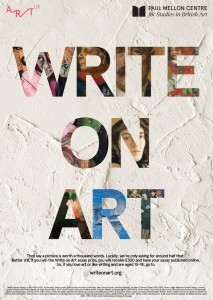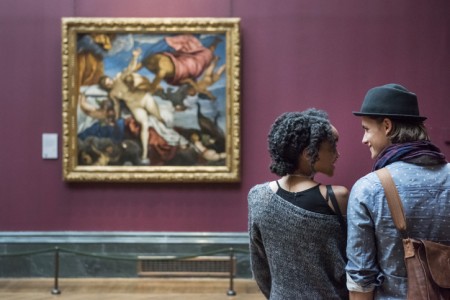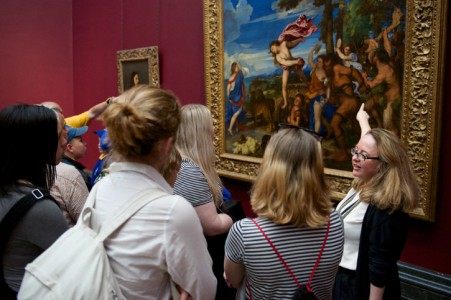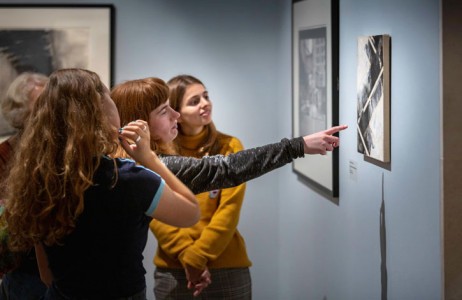Choose your artwork
Remember, you can only write about artworks that feature on Art UK's website for this competition. Browse paintings, sculptures, prints – and more – on the Discover Artworks page.
- Put your postcode or town into the 'Location' filter on the Discover Artworks page to find artworks in museums and galleries near where you live that have artworks on Art UK. You could always visit your local gallery or museum to see the artwork and connect with the collection.
- On the Discover Artworks page, use the 'Topic' filter to explore artworks by theme, such as 'Animals and plants', 'Ideas and emotions' or 'Power and politics'. You can also think of a subject that interests you and enter a keyword in the search bar – try something like 'environment', 'protest', 'technology' or 'sport'.
- Is there a particular style of art you like? Try searching for Abstract art, or Impressionism or Pop Art using the 'Style' filter. Maybe even look for a style you dislike – exploring an artwork you don't like can make for a lively piece of writing.
- Check out the Stories section on Art UK, where different artists, artworks and themes are explored. Your essay might be here too, one day!
- Still not sure? Try the artwork shuffle and see six works selected at random.
Find further inspiration in this Art UK learning resource.
Look closely at your artwork
Before you write anything, take some time to look at your chosen artwork. Look up close, look from far away, glance at it quickly, or stare at it for a long time. Look up and down, left to right.
Asking yourself these questions as you look can help you to explore it. Art UK's Superpower of Looking Kit also contains examples of questions you might want to ask yourself about your artwork.
- What materials and techniques has the artist used?
- What colours can you see?
- Is it dark or light, cool or warm, textured or smooth?
- Do you think it was made quickly or slowly?
- Is it abstract or does it show something recognisable from the visible world?
- Does it look like anything else you've seen?
- Where do you think it was made?
- How does it make you think of or feel?
- How do you think the person who made it felt?
- Is the artwork telling you something?
Write down the answer to some of these questions as a starting point for your essay.
You don't have to write about everything represented in the picture. It's fine to focus on a particular aspect or detail.
Research your artwork
Find out what other people have said about your chosen artwork. These people could be art historians, art critics, members of the public, the artist themself, or people who knew the artist. You may agree or disagree with what they think about it. You could include your agreement or disagreement with their writing in your piece.
Explore the life of the artist or artists and other work they have made. Does this artwork respond to any significant event in their life/lives? Does this work tell you anything about them as a person/as a group?
Look into the time and place your artwork was made. Were there any major historical events happening at the time? What was society like at this time? What was important to people? Does your chosen artwork respond to anything that is happening today? Does your artwork seem unusual for having been made when it was made?
You could also look at the life of your artwork after it was made. Has it moved between owners or museums/galleries? Have people come to understand it in a different way over time? Have other artists created responses to the artwork? Have there been any stories or scandals linked to the artwork?
- If you're not sure about how to research an artwork, artist or time period, there are plenty of places online you could start with – including Wikipedia, the Khan Academy, BBC Bitesize or Heni Talks.
- You could also visit a library and ask a librarian to help, or even go directly to the source by contacting the gallery or museum where the artwork is kept.
Connect with your reader
You might want to share with readers why the artwork you have chosen appeals to you, or what you find to be particularly interesting about it.
What made you choose this artwork? Does it relate to any issues that matter to you? Do you know something about the artwork or artist you find relatable?
Remember, your passion and enthusiasm will encourage your readers to also look closely and share your interest.
Make your writing enjoyable to read
Writing can also be an artistic practice and a way of being creative. Make use of skills you've developed in English lessons in your art writing. There are lots of different ways you can ensure that readers enjoy your work, and are entertained, moved or inspired.
- The words you choose. What words or phrases might you use to describe the artwork's subject or style? For example, could you describe a sitter's dress as 'cascading like a waterfall' or talk about the 'looming storm clouds in the top right corner of the artwork'?
- Show, don't tell. Showing the reader what is happening is often far more exciting than telling them. For example, 'The woman in the painting furrows her brow and grits her teeth' rather than 'The woman in the painting looks frustrated'. This technique keeps the reader's attention and allows them to use their imagination
- The format of your writing. Your writing could take the form of an essay, letter, diary entry or poem. Think about which format would best suit the themes in your chosen artwork
- Who is speaking? Your essay could be from your own perspective or that of the artist, artwork's subject, or someone else. How might different narrators have different perspectives on the artwork?
- Proofread! Once you've finished writing make sure you go back through it and check things like spelling and grammar. Make your writing the best it can be!








